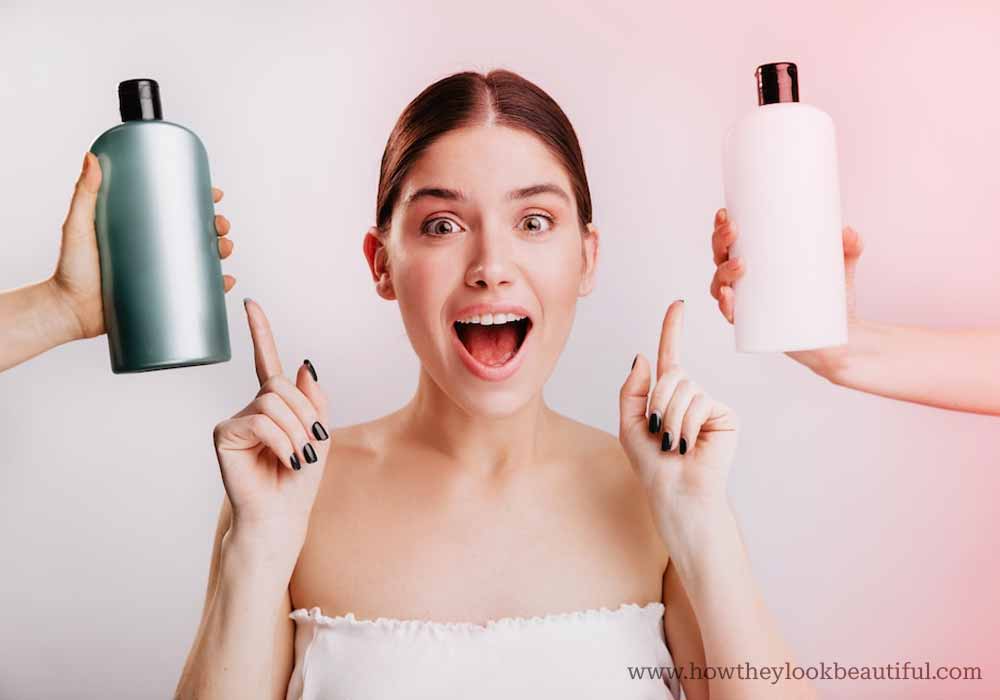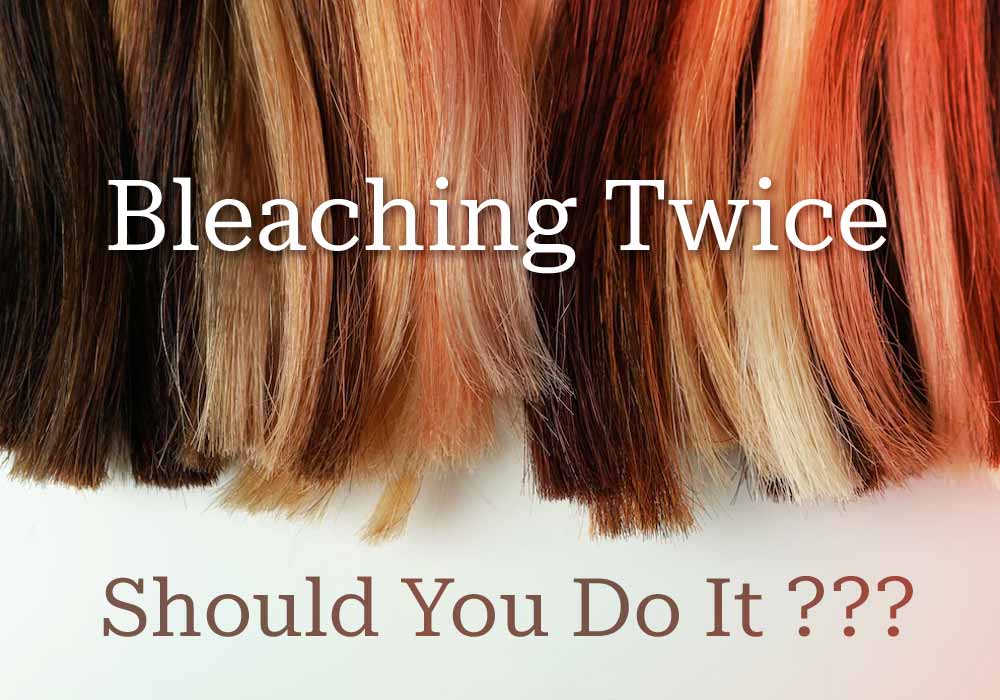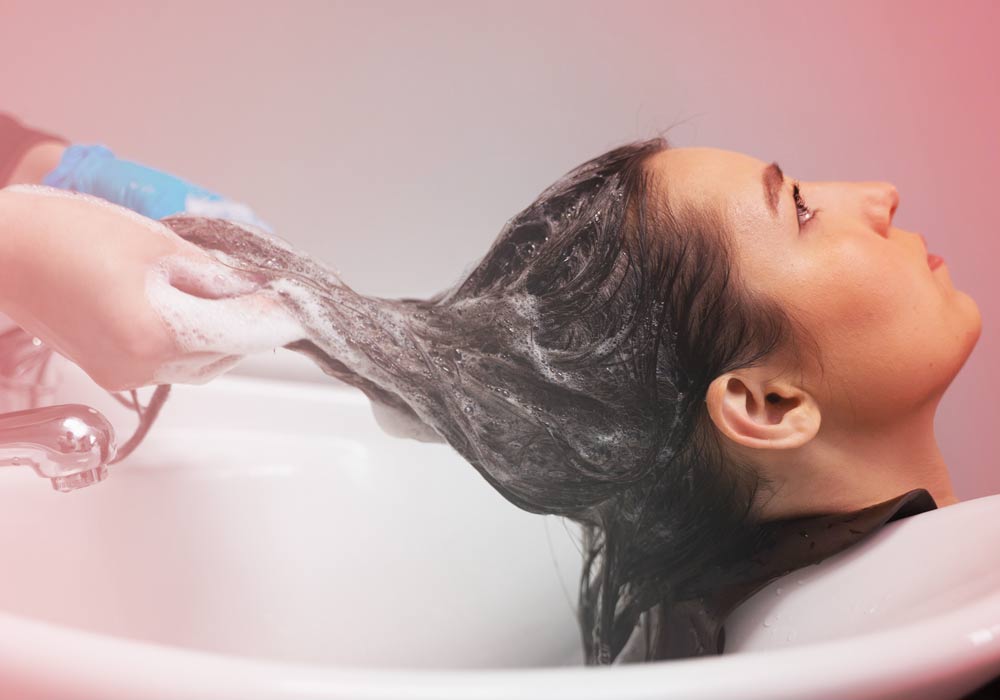Do you feel that your shampoo is not suitable for your hair? Do you want to know how to find a shampoo that will not damage your hair? Here are some tips on how to avoid damaging your hair with shampoo.
How to Know Your Shampoo is Not Suitable for Your Hair?
If a certain shampoo is not suitable for your hair, your scalp feels dry, itchy, or irritated after using the shampoo. Also, if your hair looks and feels dry, brittle, or has more tangles than usual, is another indication your shampoo may not be right for you.
- How to Know Your Shampoo is Not Suitable for Your Hair?
- 8 Signs Your Shampoo Might Not Be Right for You
- How to Find the Best Shampoo for Your Hair Type?
- You've Found the Perfect Shampoo if…
- How to Use Shampoo Correctly and Avoid Damaging Your Hair?
- How Often Should You Wash Your Hair With Shampoo?
- Are There Any Disadvantages of Using Shampoo?
- Make Your Own Shampoo
- Frequently Asked Questions
- Conclusion

8 Signs Your Shampoo Might Not Be Right for You
If your shampoo is not suiting you then there are several symptoms that will help you in deciding that shampoo is not suitable for your hair. Some of those common symptoms are:
- Itchy scalp – Your scalp is dry and/or itchy. This could be a sign that your shampoo is stripping away too much oil, which can lead to irritation.
- Your hair looks dry, dull, and lifeless – Chances are your shampoo isn’t bringing out the best in your hair.
- Your hair is breaking off more than usual – Avoid shampoos with harsh ingredients, such as ammonium lauryl sulfate or sodium lauryl sulfate.
- Hair fall – If you’re losing more hair than usual, it could be time to switch shampoos. shampoos with water in-soluble silicones may trigger hair fall. Also using a wide tooth comb can help to overcome this.
- Hair becoming flat and greasy – it’s not the right shampoo for you. Shampoos with excess fillers and waxes create buildup and result in a greasy scalp.
- Hair becomes frizzy – Your shampoo may have too high pH level.
- Your hair tangles easily.
- Your scalp is flaking.
If you think your shampoo is no longer working, use a deep conditioner for two or three weeks to see if it makes a difference. If it doesn’t, it’s time to try another product.
Also Read: Can Body Wash Be Used As Shampoo? (You Could, But…)
How to Find the Best Shampoo for Your Hair Type?
When you’re standing in front of the shampoo aisle at the drugstore, it can feel like all of the options are just a blur. You might grab what’s on sale or what’s been advertised on television, but how do you really know if it’s the best shampoo for your hair type? Here are a few tips:
- When choosing a shampoo, always read the labels carefully. The label will tell you what kind of hair the product is meant for. For example, if you have oily hair, look for a shampoo that is labeled “for oily hair” and has salicylic acid or zinc. If you want to add volume to your hair, look for ingredients such as panthenol and hydrolyzed wheat protein. Avoid shampoos that contain harsh chemicals such as sulfates, parabens, and phthalates. Look for shampoos that are labeled “Gentle” or “Natural.”
- Take a close look at the ingredients list. If you see any harsh chemicals like sulfates, parabens, or alcohol, put it back on the shelf. These ingredients can strip your hair of natural oils and damage your hair over time. Instead, opt for products that contain natural ingredients, such as essential oils and plant extracts. If possible, look for a product that is free of animal ingredients like biotin, keratin, silk powder, and gelatine as well.
- Consider your hair type. If you have oily hair, look for a clarifying shampoo that will help remove excess oil and build-up from your scalp. For dry or damaged hair, look for a hydrating or smoothing shampoo with natural ingredients like coconut oil or aloe vera. If you have sensitive skin, look for a shampoo that has soothing ingredients such as chamomile and aloe. If you have dandruff, look for a shampoo that contains selenium sulfide, zinc pyrithione, or ketoconazole and has a low pH level. These ingredients are known to be effective against dandruff.
- Finally, pay attention to how your hair feels after using a particular shampoo. If your hair feels dry and brittle after washing, that’s a sign that the shampoo is too harsh for your hair type. On the other hand, if your hair feels soft and manageable, that’s a good sign that you’ve found a winner!
Keep in mind that not all shampoos are created equal. Some may work well for some people but not so well for others. So, don’t be afraid to experiment until you find a product that works best for your hair type. Some shampoos may be beneficial for your scalp but unsuitable for your hair.
Shampoo to Use According to Hair Type & Their Ingredients
| Hair Type | Shampoo to use | Look for Ingredients like | Ingredients to Avoid | Expected Results |
|---|---|---|---|---|
| oily hair | Clarifying shampoo | Ammonium-sodium lauryl sulfate, Chlorides or bromides, Cetyl-fatty alcohols, salicylic acid, sodium stearate | *Don’t use this shampoo more than once per week. use conditioner after every use. If you have color-treated hair, look for label “For Color Treated Hair” | Should help remove excess oil or sebum and build-up like silicone from styling products and hair color chemical deposits from your scalp |
| Dry or damaged hair | Hydrating / moisturizing / or smoothing shampoo | Natural ingredients like aloe vera, oils, including avocado, macadamia, coconut, and olive, argan oil, vitamin E, glycerin, shea butter | Sulfates like sodium lauryl sulfate (SLS) and sodium Laureth sulfate (SLES) and alcohols, silicone | Should retain enough moisture |
| Sensitive skin | Hypoallergenic shampoo with formula having gentle and free of potential irritants / having balancing pH levels | Soothing ingredients such as chamomile and aloe vera, oat extract, green tea extract, oat milk, shea butter, Sodium cocoyl glycinate is considered safe and nonirritating | Sulfates, parabens, harsh fragrances, preservatives, silicones, dyes, essential oils like tea tree oil, mint oils, citrus oils, and lavender oil, formaldehyde releases, hexachlorophene | Should rinse away all the dirt and grime sitting on your scalp without any irritation, provides antioxidant, antimicrobial / keep the scalp calm, nourish dry, itchy scalps |
| Dandruff | Medicated anti-Dandruff shampoo, shampoo with a low pH level | Selenium sulfide, Salicylic acid, zinc pyrithione, sulfur, ketoconazole, coal tar solution, Nizoral AD, ciclopirox | Parabens, Phthalates, and formaldehyde-releasing ingredients like Quaternium-15, Imidazolidinyl Urea, Diazolidinyl Urea, Polyoxymethylene Urea, and Sodium Hydroxymethylglycinate, Triclosan | Reduce yeast and stop overproduction of oil glands on the scalp |
Additional Notes:
- Normal hair can use gentle cleansing shampoos or ones for specific needs (volume, shine).
- Curly hair needs moisture and avoids harsh sulfates. Look for shea butter, coconut oil, and hydrolyzed proteins.
- Shampoo frequency depends on hair type and scalp condition (oily: 2-3 times/week, dry/damaged: 1-2 times/week).
- Conditioner is important, especially for dry, damaged, or curly hair (locks in moisture, improves manageability).
- Scalp massage may improve circulation and benefit all hair types.
Natural does not always mean it is safe for all skin or hair types.

You’ve Found the Perfect Shampoo if…
- It doesn’t leave your hair feeling dry or stripped.
- It gets rid of oil and buildup without making your scalp feel dry.
- Your scalp and hair feel clean, but not stripped.
How to Use Shampoo Correctly and Avoid Damaging Your Hair?
Shampoo is one of the most common hair care products. We use it every day without thinking about how to do it correctly. However, using shampoo incorrectly can damage your hair and make it look unhealthy.
Tips on how to use shampoo correctly:
- Wet your hair before applying shampoo. Wet hair is easier to clean than dry hair.
- Apply a small amount of shampoo to your scalp and massage it in with your fingers.
- Rinse the shampoo out of your hair thoroughly. Make sure all the suds are gone before moving on to the conditioner. Leaving shampoo in your hair can make it dry and brittle.
- Massage the shampoo into your scalp with your fingers, not your nails. Scratching your scalp with your nails can damage your scalp and lead to scalp infections. Be gentle when shampooing. scrubbing vigorously can cause damage, so be sure to massage the scalp gently with your fingertips in a circular motion.
- Apply conditioner to the ends of your hair and work it up to the roots. Rinse it out thoroughly.
- Wash your hair with lukewarm water. Hot water can strip the natural oils from your scalp and make your hair dry and brittle.
If you follow these tips, you should be able to avoid damaging your hair with shampoo.
How Often Should You Wash Your Hair With Shampoo?
There is no general rule for how often you should wash your hair with shampoo. It depends on several factors, including your hair type, your activity level, and the climate. If you have oily hair, you may need to shampoo it on alternate days. If you have dry hair, you may only need to shampoo it twice or thrice a week. If you are using a clarifying shampoo, then use it once a week. Washing your hair too often can strip it of its natural oils and lead to damage. Only wash your hair when it feels dirty or oily.
If you’re concerned that your shampoo might be damaging your hair, there are a few things you can do to mitigate the effects. First, try switching to a gentle, sulfate-free formula. These shampoos are designed to cleanse your hair without stripping away its natural oils. You may also want to consider using a clarifying shampoo once or twice a week to remove any build-up from your hair. Your hormones, age, and ethnicity may also play a role in your dry hair.

Are There Any Disadvantages of Using Shampoo?
The shampoo is a detergent-based product that is designed to cleanse your hair and scalp of dirt, oil, and build-up. While shampoo can be an effective cleansing agent, it can also strip your hair of its natural oils, leading to dryness, damage, and Breakage. In some cases, shampoo can also cause irritation and allergic reactions.
Make Your Own Shampoo
Most shampoos on the market today are made with a cocktail of harsh chemicals that can strip your hair and scalp of their natural oils, leaving them susceptible to damage and dryness. What’s more, these chemicals can also build up in your hair over time, leaving it feeling heavy and looking dull.
The best way to avoid damage from shampoo is to make your own! Here’s an easy recipe for a DIY gentle shampoo that you can make at home:
- 1 cup distilled water
- 1/4 cup liquid castile soap
- 1/4 cup aloe vera gel
- 1 teaspoon jojoba oil
- 15 drops of lavender essential oil
- 15 drops of rosemary essential oil
- Mix all ingredients together in a bottle and shake well before each use.
Frequently Asked Questions
Chamomile shampoo is said to have a calming effect on the scalp. It is also said to be helpful in treating dandruff and dry scalp. Some people use it as a hair rinse to help add shine to their hair. Chamomile shampoo is made from the plant Chamomilla Recutita, which is a member of the daisy family. The plant has been used for centuries for its medicinal properties.
Conclusion
If you have ever wondered if a certain shampoo is not good for your hair, there are a few ways to tell. If your hair feels dry, brittle, or looks unhealthy in any way, that could be a sign that it’s time to switch shampoos. The same goes for your scalp; if you notice any irritation or redness, that’s another sign that your current shampoo isn’t right for you. Another way to tell if your shampoo is harming your hair and scalp is by looking at the ingredients on the label. If you see a long list of chemicals with unfamiliar names, that s a good sign to steer clear of that product. No matter what your hair type is, there is a shampoo out there that can help you achieve healthy, beautiful-looking hair.

Hi, I’m Annie,
What drives me is the ability to empower women by cultivating the self-confidence in their inner beauty, enhancing their self-image, and showing them that overall beauty needn’t be either difficult or costly and that they can seamlessly mould their style to suit their everyday needs, without having to make an either / or choice. I’m constantly surprised at every transformation and it drives me on to the next. My knowledge is enhanced by 18 years of hands-on experience, and learning from every new assignment.
When I’m not writing beauty advice for my blog, I’m consulting on make-up, hair, diet and style. Or I’m just kicking back my heels cuddling with my fat Lab, Coco.



